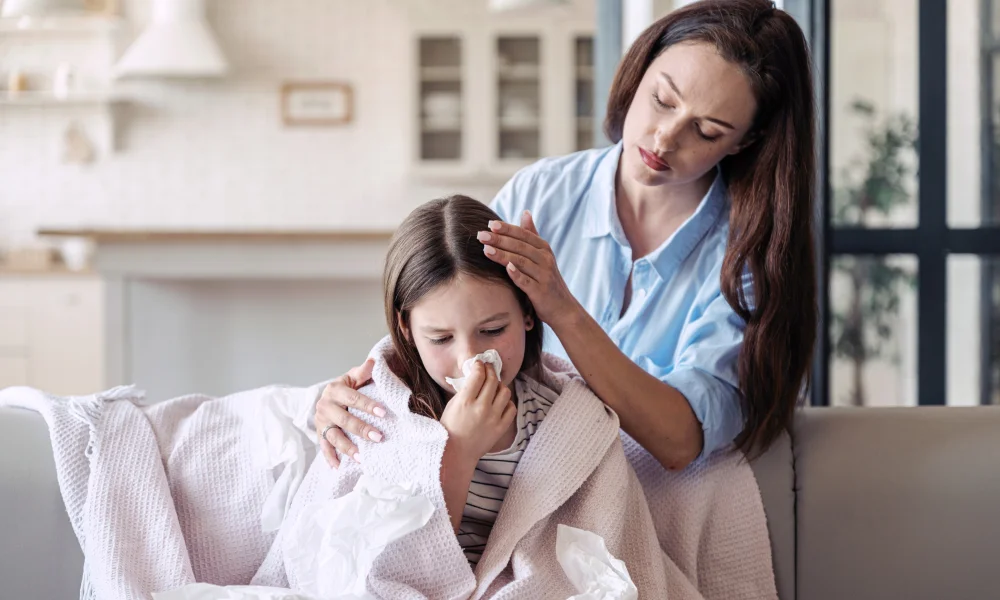Air Pollution And Children - What You Need to Know

TABLE OF CONTENTS
Of the 47 million children in India, all under five years of age, 17 million live in areas with PM10 (Particulate Matter) concentrations at twice the permissible standard, states a report by Greenpeace India.
Some of the highest air polluted states in India are Delhi, Uttar Pradesh, Bihar, Rajasthan and Maharashtra, where children are worst affected.
The lungs, brain and immune system of children are still in their developing stage. Their respiratory tract is more permeable, making them more susceptible to air pollution and possible respiratory infections. Younger children also breathe faster than adults and tend to breathe in more air relative to their body weight.
Children are also likely to encounter higher levels of air pollution. They spend more time outdoors, and as a result inhale more air pollutants per kilogram of their body weight than do adults. They have narrower airways in their lungs as compared to adults and therefore, suffer from greater airway obstruction.
The more your child is exposed to areas that are highly polluted, the higher their chances of developing respiratory illnesses, life-threatening ones too.

Children exposed to air pollutants over a prolonged period of time are bound to suffer from its detrimental effects. Depending on the type of air pollutant that your child is exposed to, there exist different ill-effects of air pollution.
Particulate Matter, a common air pollutant, consists of extremely small particles and liquid droplets. They vary in size but easily pass through the nose and throat, and enter the lungs of children. This can lead to decreased lung function, aggravated asthma and even heart attacks.
Carbon Monoxide reduces oxygen delivery to the heart, brain, and other body organs and tissues of children. Extremely high levels of this toxic chemical can also lead to death. This is a poisonous gas emitted from automobiles as a result of the incomplete combustion that takes place in engines.
As opposed to the protective ozone layer in the atmosphere, the ‘bad ozone’ layer at ground level can lead to a variety of health problems for your child. It is created as a result of industrial emissions, vehicle exhaust and chemical solvents and can cause inflammation and damage of airways, shortness of breath and again, aggravation of asthma.
Exposure to Sulphur Dioxide for more than five minutes can cause a wide range of respiratory problems in children, including bronchoconstriction. This involves tightening of the muscles in the lungs, constricting air pathways. Sulphur dioxide is emitted from fossil fuel combustion in power plants, industrial facilities and vehicle exhausts.
Depending on the duration of exposure, emissions of lead can adversely affect the nervous system, immune system, kidney function, developmental and reproductive systems, and the cardiovascular (heart) system of children. Lead is emitted from the fuels used in vehicles. This poisonous emission once inhaled into the body can distribute itself in the blood and accumulate in the bones.
Nitrogen oxide is another gas emitted from vehicles and power plants. Exposure to this gas, ranging from 30 minutes to 24 hours, can result in respiratory problems such as airway inflammation. Exposure to high concentrations can affect children, adults and even the elderly with asthma.

One of the most effective ways to help your children fight the woes of air pollution is to encourage them to play indoors on smoggy days. Limiting them to the outdoors on these days will go a long way in delaying or preventing their exposure to the poisonous gases outside.
Your child may be allergic to certain components. Keeping a stock of the same can help eliminate recurring health issues.
While schools are working on coping mechanisms to curb exposure to air pollution, you can encourage your children to wear air pollution masks.
Also, avoiding activities like burning dried leaves, garbage or other solid wastes in highly polluted areas can help curb air pollution to an extent.
The efforts made on your behalf to curb air pollution can go a long way in saving your child from life-threatening health issues.






